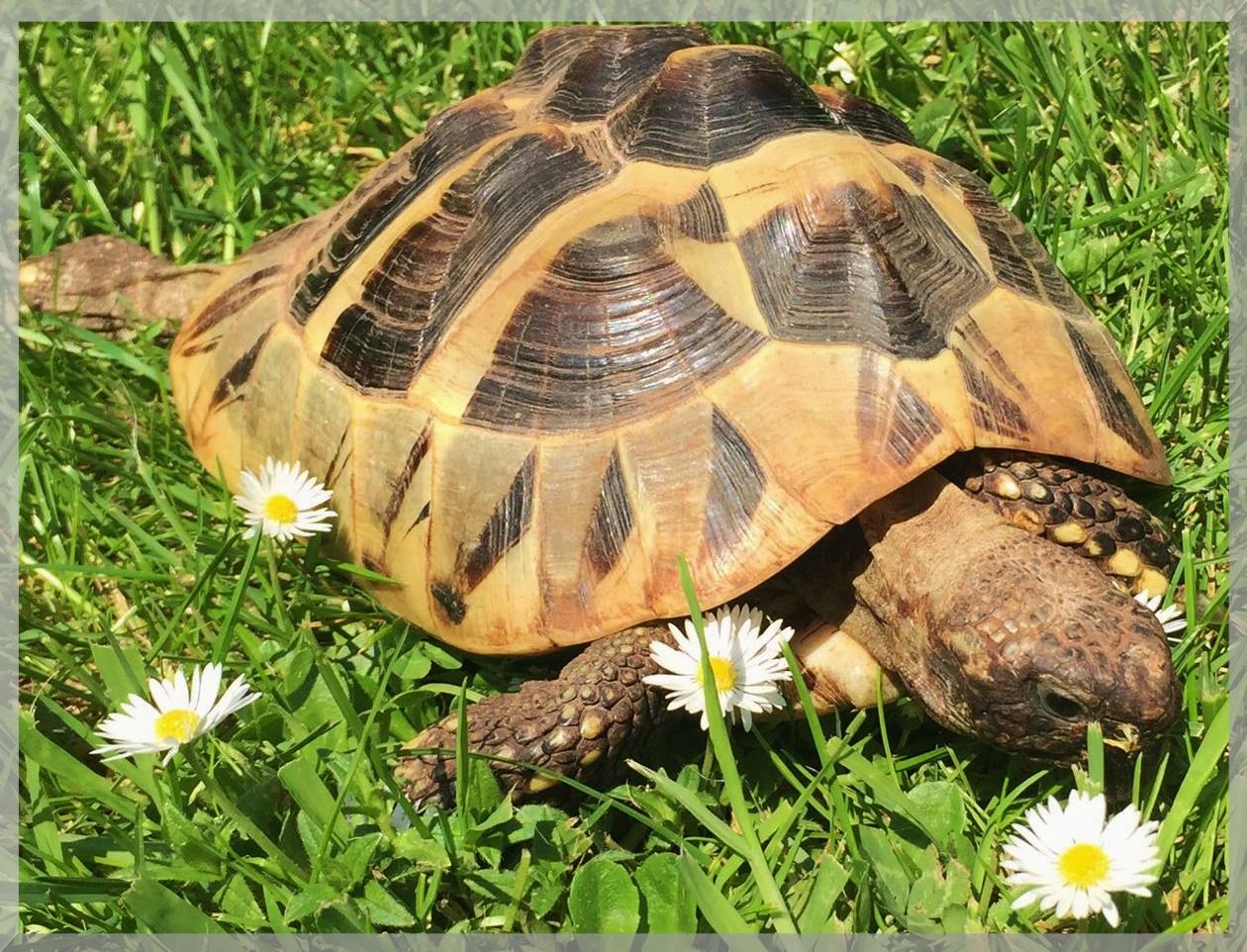Animals in Dreams
Every part of our psychic structure (intentionally I often use the imprecise word "content" for that) begins with a first encounter in our life. The classification into the complex ordering scheme of our brain is still very inaccurate after this first encounter, blurred and dark. With growing procession the “content” becomes more complex and evolves. If it is of an emotional nature it is being associated with animals and we come to the biology of dreaming.
The psychic contents within us are not only words in a book, rather, because they are part of our consciousness and therefore alive, they are also living parts of our soul.
The dream lets our soul become a cosmos with all its inhabitants, from the smallest to the biggest. And all these parts, of which we are the creator of, want to live and grow. Our attention and love is like a magical sun and its beams melt the laws of time and the becoming and growth is being accelerated.
"I came to a meadow that was littered with white blossoms but I payed my attention to the numberless amount of ants, which rushed back and forth. They crawled along in a broad path that I followed. It forked and curved and lead across the meadow. As I got further ahead I saw that the small animals carried rice grains. It was a whole army. I walked on. The ants became bigger and so did their burdens. They were carrying white beans. The path turned into a street of white sand and I saw gold-brown termites on it. As the animals grew their number shrank and the tangle of the bodies became immaculate symmetry.
Another change occurred: The termites became small snow-white creatures that looked like rams but were of the size of mice. Then they came right at me. All these rams turned into white puppies which grew and all together became a lamb. The path ended in front of a housing. The lamb walked into the bright shining building and stood up to walk on two legs. A ladder appeared in front of us. The lamb which grew into an angel-like being, walked up the ladder with me. Hand in hand and rung by rung.” (S.)
General Symbol Principles regarding Animals
vitality

Animals in dreams often point out sexual strength and vitality of the human. If they appear in weak conditions it is a warning and we should think about whether we have neglected our body.
-
Evolutionary development: the higher, the more aware we are of the content
-
Color: equal to the quality of color (see Symbolism of Colors)
-
Element affiliation: see Symbolism of the Evolution
-
Behavior: characteristic for the degree of integration (f.e. aggressive, friendly, trustful)
-
Size of the animal: tells us about the degree of meaning that our unconscious gives this aspect
-
Embryo, young animal: expresses that this soul content is in the initial state of becoming conscious
-
Feeding animals: encouraging the process of becoming conscious
I. Water Animals
fish: In mythology the fish is a primitive animal that is indeed a symbol of the chaos out of which these creatures came. The chaos has not to be seen as a dangerous aspect because in the end it is the resource out of which the order came.
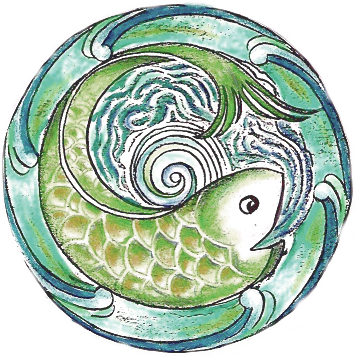
From a psychological viewpoint one has to pay attention to several things when trying to understand the symbolism of the fish: The habitat must be understood correctly – the water is a symbol for feelings as well as for the unconscious (then it must not be seen as Yin symbol). Also important is the color, turbidity, depth, growth and the streaming behavior (see The Four Elements). Furthermore, it is important whether one looks into the water or swims in it. Also the color and the shape (elongated= aggressive; round=friendly) of the fish are to regard .
The interpretation of the different aspects are to find under The Four Elements, Symbolism of Colors and Top-Bottom Symbolism.
“The dream may seem small and insignificant but it brought me really a lot of joy, desire and hope: I stood in front of a plank door which had been painted white recently. Behind the door lay new experiences and an infinite amount of new worlds. Now I stand right in front of it to make my first step into this new, rich world.” (C.)
This was the preliminary peak and the end of a series of dreams in serial nights which I want to summarize quickly:
At first it was a fish. The first time I saw it for a short moment, it was dirty-grey, lethargic and dull. It had the shape of a short moraine but was as big as an elephant. The next time it was a normal, flexible fish. The third time it was a heaving swarm of tiny, very colorful and bright fish. They flew out of the water as if there was no barrier and fluttered around me like a swarm of butterflies.
turtle: The turtle is a creature that can live on land as well as in the water. A creature that belongs to two areas is something like a mediator or messenger between these two. As such a connective the turtle came to great importance in the Indian and Chinese mythology:
The Hinduism ascribes the creation of the world to a turtle: The turtle Khurma (second incarnation of Vishnu) rose to the surface of the primeval ocean (the chaos, thought of as an ocean of milk). There Khurma's back formed the world mountain Meru around which the world grew.
In Chinese mythology the turtle is a symbol of wisdom because it comes from a time when the world was at its very beginning and has its knowledge from those primeval days. The “I Ching” (chin.: 易经) tells about the oracular reading from turtle shells.
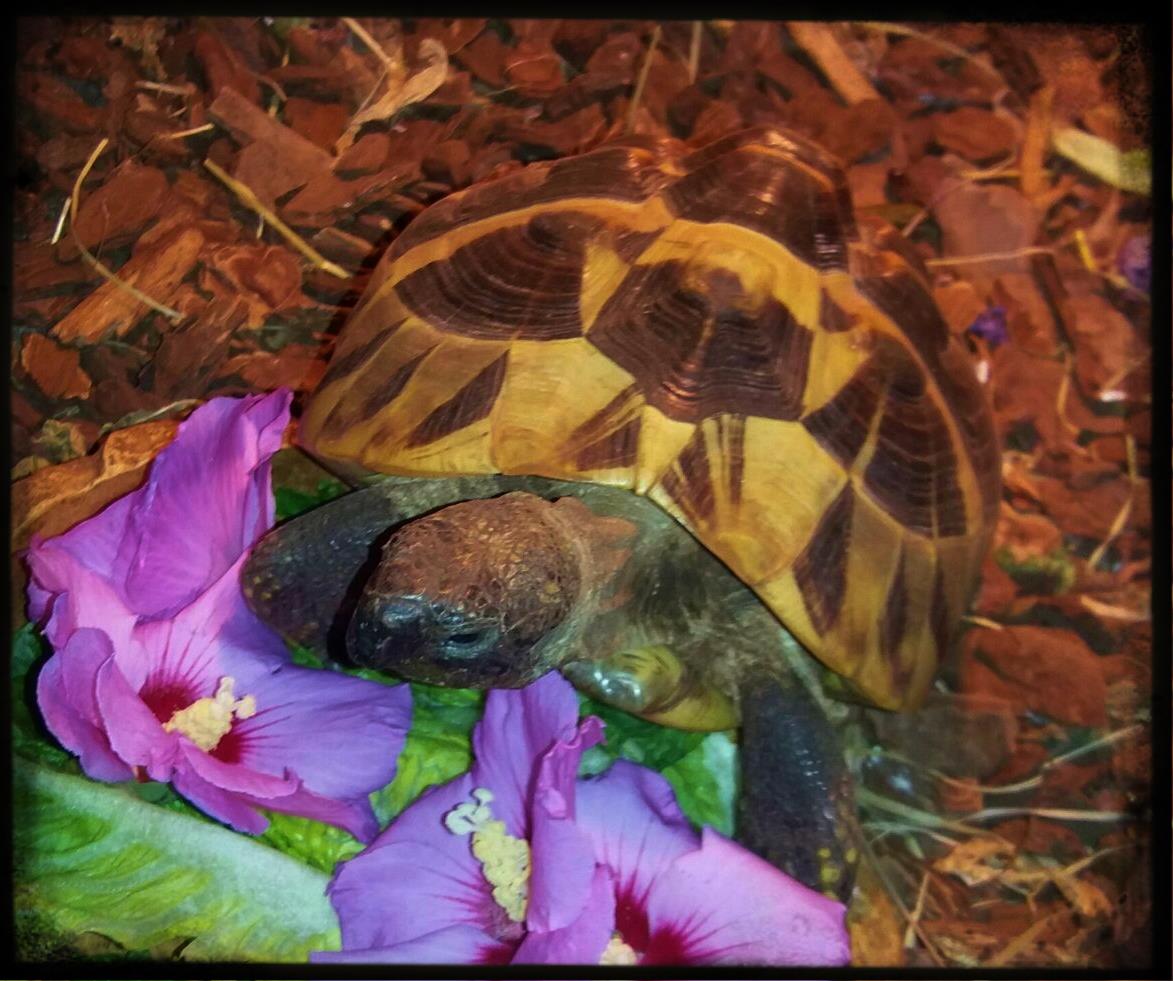
The turtle with its round shape also resembles the aspect of the germ (resp. egg). Therefore, it is the beginning from which higher things grow.
Kiessing, “Dichter erzählen ihre Träume” (P. Ludwig) ("Poets tell their dreams" no English version available)
“I see soils, nothing but soils – pure, deep, black – a small, round area of earth. The earth is moving, like something is crawling underneath and slowly, a thing comes to the surface: a young turtle! It has a beautiful, shimmering shell and beautiful wet-shiny eyes. It came all up to the surface and looked around. But there is nothing but the young turtle itself! It is all on its own. After a while, another turtle makes its way to the surface! Its shell was as beautiful as the shell of the first turtle and it also had these shining eyes. The both turtles saw each other and hurried to get to meet. As they met they got up on their hind legs and with all one's heart they hugged again and again. With gentle paws they palmed each other: deeply ecstasized because of the existence of one another."
"Me and my wife are in a huge garden. In the middle of it is a moonlit lawn with some trees. There we see a white tortoise. It asks us to bring it back to the sea. It is hard for us to carry it and with our last power we lift it over a fence. As we and the tortoise arrive at the sea, it thanks us and disappears in the silver waves. We keep on looking at the spot where it disappeared. We stand there knowing and thankful for all the things it conveyed us." (A.)
“On top of a rock sits a big turtle with a primeval, wrinkled face – a human's face. It is delivering a serious and wise speech.” (A.)
II. Land Animals
toads, snakes, mice: These animals live in the earth therefore they come from the unconscious. The encounter with them is an encounter with the unfamiliar that enters our consciousness. They are messengers between the earth (unconscious) and our habitat (conscious). Instead of confronting ourselves with these messengers with an inner willingness, trying to understand their messages, we often react aggressive when they occur. Toads and snakes are cold-blooded unlike mice. They are often deeper inside the earth then mice, that live primarily on the surface (at least intuitively, if not in the biological sense).
snakes: They are often symbols for unconscious urges. Often we associate snakes with the earth out of which they come. Therefore, in symbolism they are emotional-vital compulsive aspects of the unconscious.
This symbolism surely is very different depending on the continent we are living on. In India f.e. snakes symbolize different vital and polar aspects, like fire (poison) or water, to which the snakes can also belong (see Indian mythology – Nagas (water snakes) and Ragas (fire snakes)).
-
upraising snakes – etherealization of the driving force (in fairy tales and also in dreams they often wear crowns). As standing snakes they are often guardians of the hidden (earth, treasures, past) and shaped by wisdom.
“I float in a dream higher and higher until I break through to another sphere. It was a wide, green valley with trees and bushes. Very quiet and harmonic. Then I recognized a light coming from under a big bush. I came closer. I saw a giant snakes which seemed to glow in a red-golden shade. The glowing came from within it. It was tied around the bush sleeping. I should have woken it up but my fear was too great, so instead I woke up myself.”
-
numerous snakes: If contents are still undifferentiated, they show themselves as a bunch of many snakes. If it is only one snake it means that the symbol refers to an concrete content (f.e. our conventional-moral attitude towards the driving force). Surely, the snake's symbolism can also be borrowed from everyday speech (f.e. falsehood – in this case the snake is relating to a person).
toad, frog: In fairy tales we often find them, in dreams rarely. The unconscious doesn't have a broad, biological knowledge available and therefore it sees animals with an other evolutionary status then the biology. Here, the toad has a higher evolutionary status then the snake. The snake is a worm-like creature, while the toad has four limbs and a stocky body that makes it look more similar to us then the snake. The next stage in the symbolic evolution would be a mammal and after that the human himself.
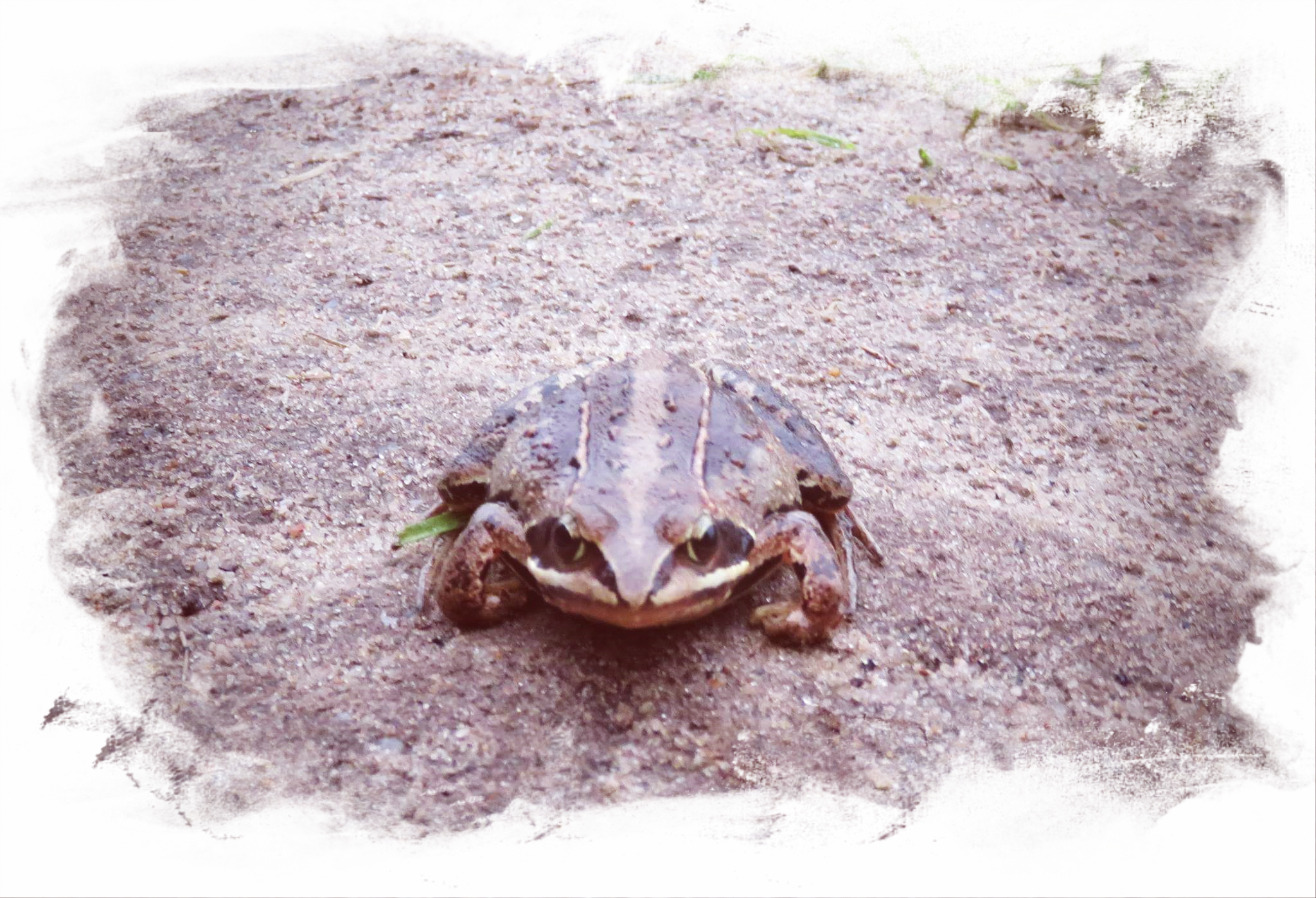
mice: Whether in fairy tales or in cartoons, mice are told to be much more intelligent then toads or snakes (except for the wise snakes which have a heavenly aspect). The intelligence of an animal is an expression of its inner mental aspect and therefore also for the process of becoming conscious. Mice do also live in human's houses, thus they are closer to the human concerning contact and habitat. Mice symbolize more complex contents (means feelings with mental topics). These contents are on the threshold between unconscious (underground tunnels of the mice) and conscious (entering the visible area and habitat of the human).
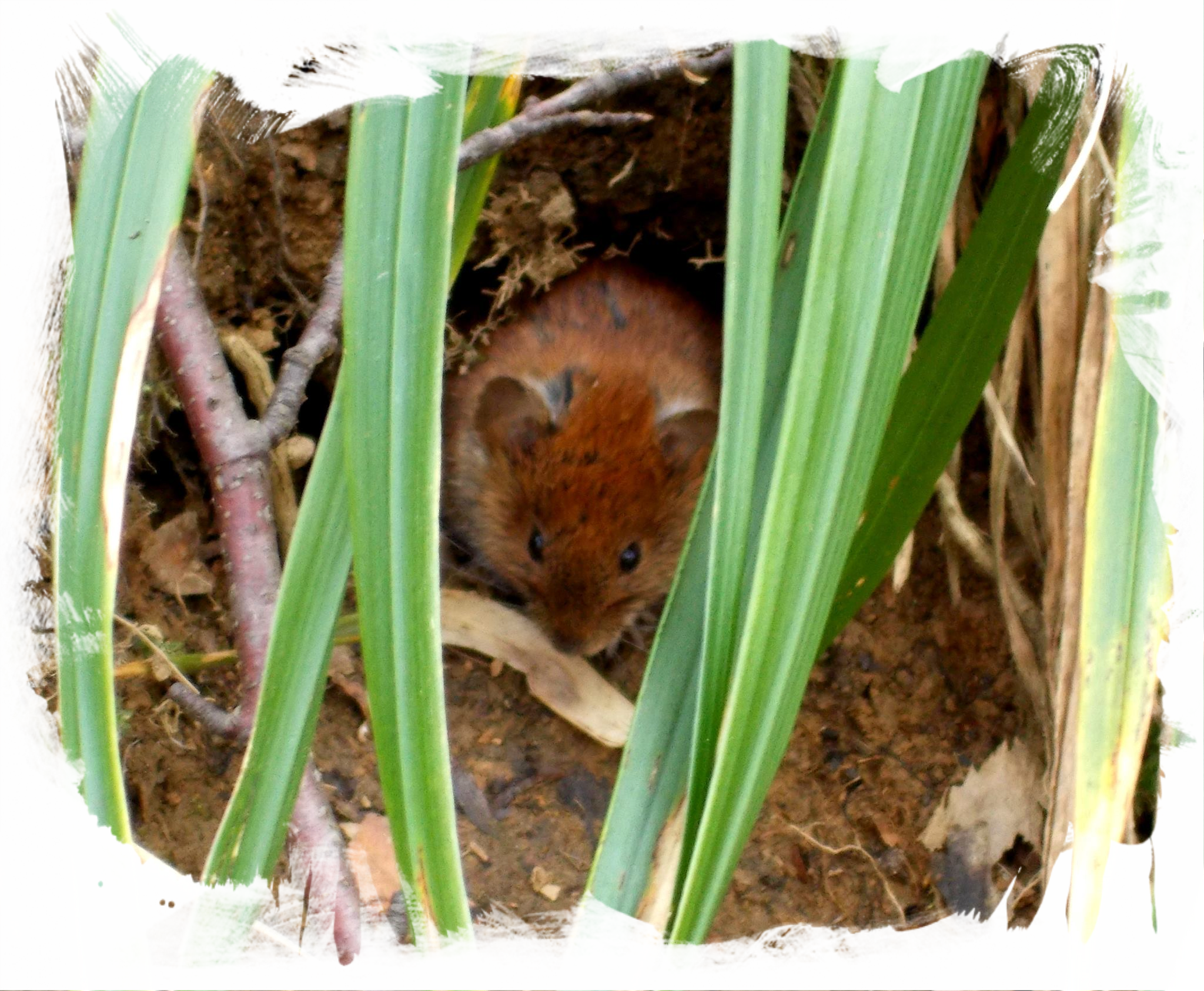
cat: Cats often appear in mythology, fairy tales and also in dreams. This phenomena has a special cause: The cat is a representative of the night and therefore assigned to the unconscious. It is also an aspect of the anima of the man.
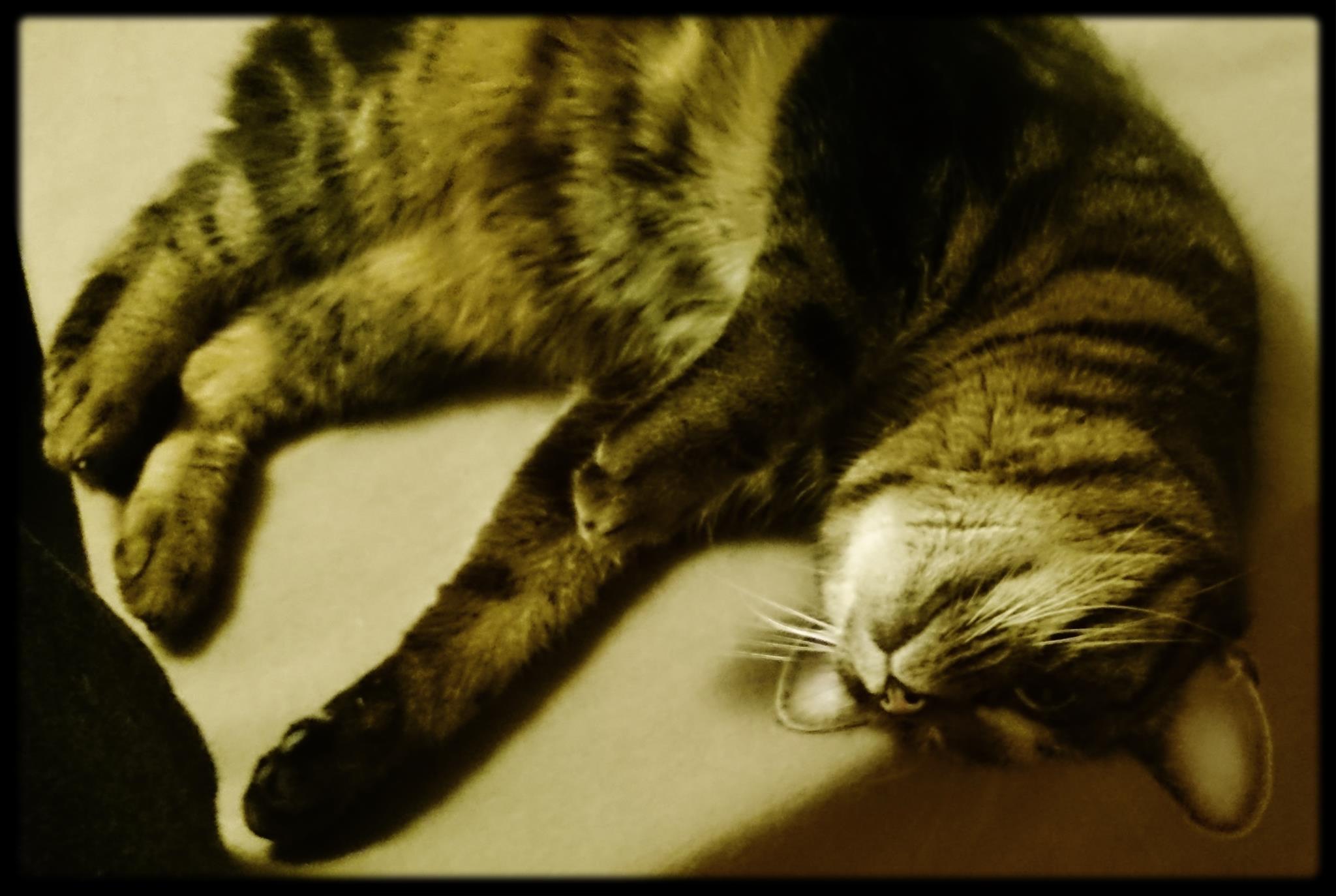
In case of women the dog belongs to the animus. Because men think different from women in many cases and therefore don't understand women and their desires and affections, the cat is a suitable image for the relation to the woman, because it often reacts unpredictable and keeps its independence.
An aspect in form of a black wild cat applies more to the unconscious then a grey or white cat. Latter is already conscious and as a consequence symbolizes a balanced relationship of the man to his femal counterpart resp. to the own emotional sphere.

"I walk from a street to an iron garden gate through which I come into a garden. As I enter the garden a female wizard appears in front of me and orders me to go into the garden of examinations. There is no refusal, the path is blocked.
I have to cross different gardens with obstacles and fences that I must overcome. There are a white cat and a white dog by my side and when I stop they remind me that I have to go further. I gather all kinds of fruits and get back to the female wizard. Now there are standing two set tables with plates in the garden. I put the fruits on the plates. The wizard, now a young woman, is pleased and happy and I am too. The farewell is hard and she cries two pearls. Suddenly, I recognize her as the great mother. The trees unwind and the surroundings become transparent and everything dissolves in gentle white light haze.” (V.)
pig: The pig can be related to two aspects:
-
wild boar: Due to its habitat and its mode of life, the boar's symbolism is different from the symbolism of the squealer: it lives in the woods which are connected to the sphere of the unconscious. Also the boar is wild what means that it is not subjugated to the mind and to the conscious action (not “domesticated”).
A mannerism of the boar adds a special aspect to its symbolic value: It burrows through the earth – i.e. this symbolic aspect is on the threshold of becoming conscious. The upper layer of the unconscious is being cracked up and the underlying contents become visible (conscious).“The path led me through a dry, vegetationless region. I came to ruins which were not much more then 1 ½ meter high walls. There lived a bunch of shady characters who enjoyed throwing stones at a desperately running boar. A man next to me called on me to give him a stone plate to throw. I didn't dare to disagree because I feared the savageness of these people. I gave him the plate and he threw it at the boar and killed it. I observed the big animal with its black back. Its belly was pink tho." (C.)
-
squealer: Unfairly, the squealer is associated with wallowing in mud, with a compulsive and filthy lifestyle and with gluttony. These associations are memorized in the unconscious due to language and tradition, and come to life in the symbolism of our dreams. Hence, the squealer stands for a person who lives his animal needs without regard for decency and morality. When the moral instance brings on its criticism it often uses the pig to criticize an uninhibited lifestyle (especially when moral and physical needs stand in conflict) – and it often isn't right. As a representative of learned morals the inner moral tends to oppression and separation from nature and as a result intensifies the inner conflict. With an inner dialog, a pacifying talk, these differences can be reconciled and the human can turn towards a reasonable compromise.
“I felt like I was on a low astral plane. The path guided me to a fork. There was a fence and behind it a pub garden with quaffing and frivolous people. The people tried to wave me and other passersby nearer. On a podium sat a human in form of a pig.” (V.)
“While I pass through a forest I find a small piglet which is running around freely. I apply a line and walk it as if it was a dog. The people are wondering but it doesn't bother me.” (D.)
dog: The dog has, like the horse, a higher rank within the group of domesticated animals. For the human the dog is a guardian, a protector and a roommate. Accordingly, its rank as a dream symbol is high (more conscious). In its symbolism it is a servant of the human and thus a servant of the consciousness. To count as a fully integrated part of the consciousness though the dog is still too brutish. Even if it is obedient it is still aggressive and occasionally little composed and dominated by its body.
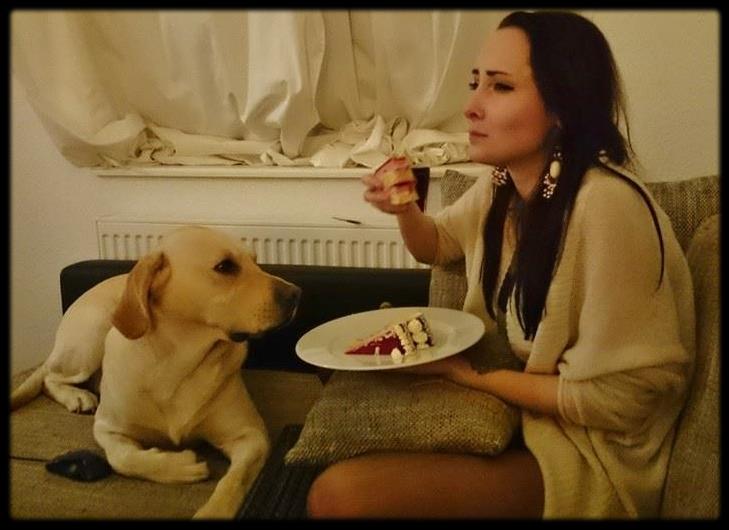
In rare cases the dog can have an additional symbolic aspect: Due to its guardian quality it can become a symbol for a threshold guardian.
As a seeing-eye dog it can be a guide through the darkness.
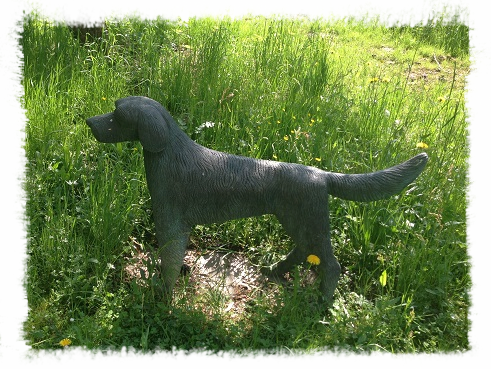
horse: The horse distinguishes from other pets in so far that it is an aide of man, which does work and which helps transporting things. Therefore, it renders a higher duty then animals that only serve as human nourishment.
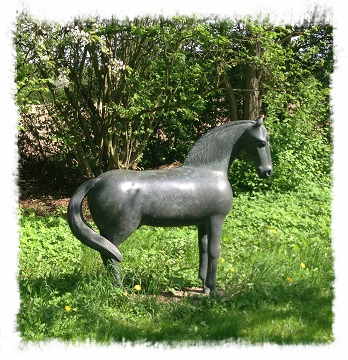
As a dream symbol the horse is a helping aspect from the unconscious. It can also be a symbol of motion (a dynamic-animal force within the human, that provides perseverance and vim).
“The White Horseman”: “I am with V. in a library and we flip through an old big book. On one of the pages there is an image that seems to begin moving. It is like watching out of a window.
A very beautiful horseman on a white horse rides in a sunny and wide landscape. Suddenly, dark guises on black horses gallop towards him, obviously with hostile intentions. I take them for monks of the inquisition. The horseman turns his horse and rushes back to a nearby city. He passes through the town gate which closes right after him. His fast-approaching pursuers are being halt 20 or 30 meters behind him by an invisible hand. They fall into the sand with vehemence.”“Me and A. walk through a town and cross a wooden fence. As far as I know it should enclose an untilled property. We open the small gate and surprisingly behind it we find a large meadow. It looks familiar to me. While I still ponder the meadow is becoming larger and larger. Soon it reaches to the horizon. We see that a herd of clean-limbed, white horses is grazing near us. They are tolerating us walking through their rows. As we admire them, I see that some of them have wings. Suddenly, two of them silently raise oneself into the air and soon they pass from our view.”
Air Animals
Butterflies: Butterflies are symbols of unfolding and can be seen as the "flowers of the air". They don't have an own expression of emotions and don't show any kind of dynamic-animal force. They are beautiful and show up in all colors (which is the core of their symbolic meaning). In comparison to bird, butterflies are weaker and more fragile (f.e. their flying is an “unsteady” flapping of their wings and not an unerring flight).

“I find myself in a winter scenery where everything is covered by a thin layer of snow. I discover a beautiful butterfly sitting on the snow. As I look at it enchanted, it strikes its wings and floats up into the air.” (A.)
Here the butterfly is comparable to the spring, which dispels the cold rigidity of the snow and replaces it with flowers.
Birds: The habitat of birds is partly on earth (our habitat) where they (mostly) get their food from. The air above us is their space of unfolding; it is the (symbolic mental) area of which they have mastery.
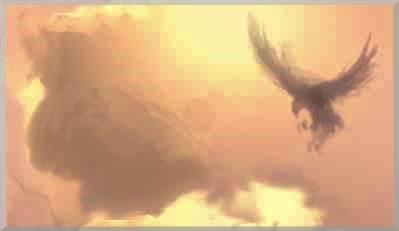
"This time I went through an apartment I have often dreamed of before. I instantly went to the last room in the hallway that always had a threatening ghostly touch to it. Today this chamber had no threatening aspects whatsoever. The walls where shining white and there were no stored objects. There was an access to the outside and most conspicuously: a huge falcon had built a nest in the corner of the room. It was sitting there spreading its wings and tail, floating upwards. I was fascinated by this beautiful animal and left the room cautiously, so I do not disturb the falcon.
Seemingly, the threatening and ghostly aspects dissolved in this dream and strove towards the sky (salvation). This was also the last dream of this 'apartment series' with which I was confronted for several years.” (V.)
Owl: The owl is being connected with wisdom. This conception can be explained symbolically as follows. As a bird (mental aspect) the owl belongs to the night (unconscious) and gets its nourishment there. Its big eyes point to a highly developed visual sense (realization) which enables it to see in the darkness (a sphere that is usually not consciously accessible). Therefore, the owl symbolizes intuitive abilities of the human. An ability with which hidden knowledge of the unconscious can be used by the consciousness.

© Alfred Ballabene (Vienna) translated by Seth


